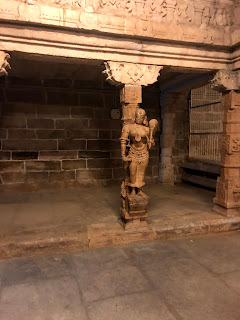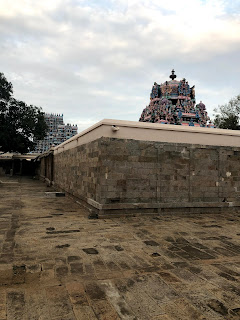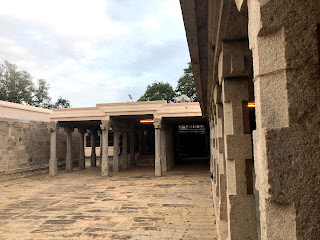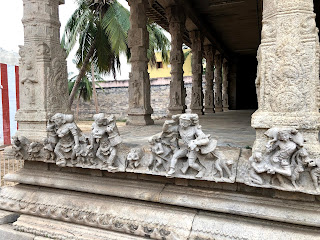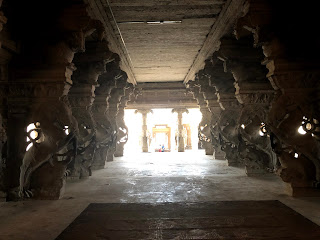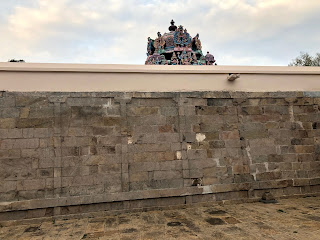Before we go on to the next temple, we will familiarize ourselves with the basic plan and architectural elements of a South Indian temple. This is a simple approach for the benefit of those who have rarely or never visited one of these temples. To others this will be of little value or a refresher.
The architecture of South Indian temples belongs to the Dravidian style and is distinctly different from those found in other parts of India, although they follow the same principles. The Dravidian style is the predominant style of temples in Tamil Nadu, Karnataka, Andhra, Telangana, Kerala and Sri Lanka.
Those who have followed these posts may feel that most of these temples look very similar and they are. That is why I have tried to show photos of different angles of these temples to keep it interesting. Of course there are important differences and every temple is unique. They look similar because they were built according to a certain set of principles that were codified in the 8th century. There are several texts called the Shilpa Sastras and the Agamas that clearly lay out how a temple should be built. These temples are built according to the coordinates of Yantras, ancient and mystical diagrams that represent the universe.
The most important part of a temple is the moolasthaanam or sanctum sanctorum. It is the womb of the temple or the Garbagraham. The primary deity resides here. It is usually a fixed, stone idol. This space is quite small in older temples. In Sivan temples it is usually but not always a lingam. In other temples it is a stone idol. This small space can be square, rectangular, circular or apsidal and is capped by the Vimanam which also comes in many shapes. Just in front of this is an ante-chamber that is called the Arthamandapam. Surrounding these two structures is the great hall or Mahamandapam that has several subsidiary shrines. This complex has one or 3 entrances and is enclosed. Surrounding these are a series of often rectangular walled enclosures that are the circumbulatory pathways or Prakarams. The inner ones are enclosed while the outer ones are exposed to the sky. They are in a sequence of odd numbers and are up to 7 in larger temples. The outermost is usually not surrounded by a wall. The enclosures house several subsidiary shrines and the Uthsavamoorthy the processional idol which is usually a movable metal idol. The walls have alcoves or recesses that house a wide variety of deities.
As you enter the temple the first structure is the gopuram or temple tower. It is usually built over the entrance of a walled enclosure. These were mostly later additions in time and in a lot of temples dwarf the height of the Vimanam. You then encounter the Kodimaram (the flagstaff), the Balipeedam (the sacrificial altar) and the Vaahanam ( Vehicle - Nanthi in Sivan temples and Garuda in Vishnu temples). The entrance to the Arthamandapam is flanked by two large guardian statues usually called the Dwarapaalakar.
Hope this gives people the context to appreciate these temples. Below are some examples. Of course there are many variations.




